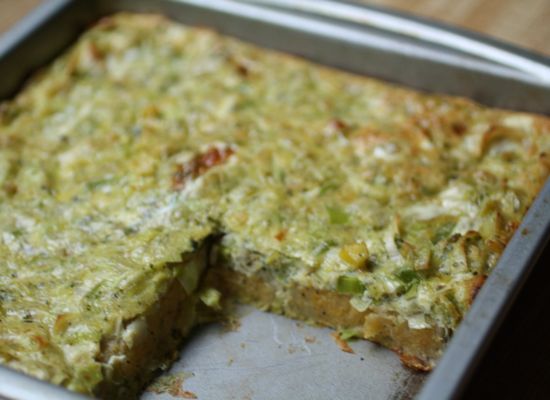Today's offering is a guest post from kindred spirit and fellow food blogger Annelies Zijderveld. You'll love the way she explores leftovers both in the kitchen and on the page.

Leftovers. When was the last time you heard someone get excited about leftovers? By their very name, they point to past revelry and sumptuous meals like the remnant of the Petrale Sole from Friday night’s dinner or Salade Nicoise from Sunday lunch. How is it then, that a dish you could be jubilant at receiving hot out of the oven or freshly tossed can seem so diminished even the day after? I think, too, of the name given to the bag that holds restaurant leftovers and wonder if a doggie ever really did get to sup on its contents?
Leftovers in poetry play a different role. They are the indispensible bits- a fragment of a phrase jotted down quickly in the notebook you’ve got tucked in your bag or a line that in the final analysis didn’t quite fit into another poem but couldn’t quite be deleted from the computer screen. A poet I worked with and admire talked about the importance of keeping a working document of salvaged lines as a library from which to draw when your well might be running low.
The editing room, the chopping block- what remains after the poem is penned. What makes leftovers revelatory in a poem and on the plate is how they can be reimagined from their original intent. So how do you make a masterpiece from leftovers? This requires a bit of ingenuity or deviance, depending on your perspective. Just as poets read to waken their sensibility to listen to the world around them and see it for what it is and not just for what it might seem, so too, do home cooks contemplate cookbooks, restaurant menus or simply ingredient lists for new ideas of pairings that might work well together. Simply ask a Thanksgiving cook about how they plan to incorporate Thursday’s turkey into Friday meals.
Then, there’s an idea that threatens departure of the original idea and might completely change the direction of the poem or recipe. This can be a brilliant, wonderful thing or it can subsume and takeover. It helps to be married to a fictional novelist in times like these, where, as he is finishing one novel, a nugget of an idea that tried to make its way into his current work has now begun forming into an idea for future reckoning. It could be construed as a leftover.

Recently, the delivery of my CSA box included three gigantic organic leeks inside. I marveled at their size and wondered to what end they would come. A week passed and another joined it. Before long, I began dreading the leeks’ wrinkling and withering surmising that if I did not use them soon, I would have wasted three perfectly good leeks. On a weeknight, just like any other, I decided to take action.
Out came the half used tube of polenta, the small jar of pesto, half a block of parmesan and a few spoonfuls of yogurt. I possess a soft spot for Leek and Goat Cheese Quiche and knew it to be a favorite in our house. From there, I began conspiring. What started as a mission to save the leeks ended up finishing up the dregs of leftover ingredients and inserting the kitchen with a helpful lesson.
Sometimes, what is leftover has tremendous potential, but requires the ability to see the leftover’s potential for what it is. Maybe another way to look at it is to consider how old ingredients can take on new life, which if you think of it encompasses so much more than poetry and food, doesn’t it? And in this way, leftovers reimagined can concoct their own story to be told between forkfuls.
PESTO POLENTA BREAKFAST BAKE
YIELD: 6-8 servings
3 leeks
1 tablespoon olive oil
2 tablespoons pesto
2 tablespoons freshly grated parmesan
1 18 oz. tube organic basil and garlic polenta
1 tablespoon plain yogurt
6 eggs
Preheat oven to 350.
Coat a 9x9 pan with olive oil spray or dab with warm butter and smear all over the pan. Slice 9 rounds of the polenta and place into the bottom of the pan to cover the majority of the pan with the polenta rounds. Set aside.
Slice leeks down the middle and rinse. Then chop them into half moons.
In a medium pot or pan, pour in the olive oil and set over low medium heat. Once the oil is slippery and coats the bottom of the pan, scoop the leeks into the pan and stir occasionally until soft, about 4-5 minutes. Turn off heat.
Crack 6 eggs into a medium bowl and add in the yogurt. Whisk until combined. Stir in pesto and freshly grated Parmesan cheese. Lastly, stir in the leeks until combined.
Pour egg mixture over the polenta rounds and ensure each area of the polenta is covered. Cook for 45-50 minutes or until golden brown on the edges.
*
 About the author. For over a decade, Annelies has worked in the food industry, and even longer if you consider the restaurant jobs that ignited her passion for working in food. She likes to linger over lines of poetry that stop her cold, mark up cookbooks in bed and concoct food poetry over at the food poet, a blog full of poetry, food and art a la carte. She lives in San Francisco, California.
About the author. For over a decade, Annelies has worked in the food industry, and even longer if you consider the restaurant jobs that ignited her passion for working in food. She likes to linger over lines of poetry that stop her cold, mark up cookbooks in bed and concoct food poetry over at the food poet, a blog full of poetry, food and art a la carte. She lives in San Francisco, California.

